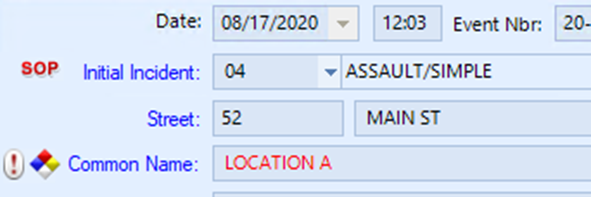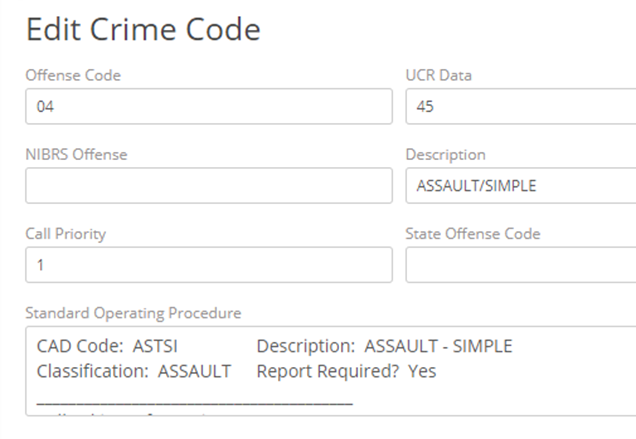Effective Dispatch using Standard Operating Procedures
- Category - Uncategorized
What is a Standard Operating Procedure?
A dispatcher may be managing many events happening concurrently and each event or incident will be accompanied by its own set of rules and procedures or “Standard Operating Procedures”. Much of this is handled through recurring training to ensure that dispatchers are up to date on the correct procedures and steps to take in the instant of an incident occurring, however, ARMS attempts to ease this burden through the use of the SOP button located in CAD.
This SOP button will automatically appear, flash, and be accompanied by an audible tone when an incident code is used that has SOP data associated with it.

How to use a Standard Operating Procedure?
To set up these SOPs for your department to use, it is as simple as accessing the specific Crime Code in the Setup Menu and editing the text box labeled Standard Operating Procedure:

Once clicked, ARMS will generate a dialog box when any of the customizable data that an ARMS administrator has designed to use. This dialog box can include anything, but we see a majority of our users inputting instructions and reminders to the dispatcher to complete when an event of that type occurs. In my example above, a simple assault code was input by the dispatcher. Now if the dispatcher selects the SOP button, they will be able to see any data their Admin wants them to be aware of:

Why use Standard Operating Procedures?
In my example, I have included the definition of this type of incident (and the cases where a better incident code can be used), the information the call taker will need from the Reporting Party, instructions for the dispatch themselves, and instructions to be relayed to the officer via the radio.
Other information such as who needs to be notified when a certain incident occurs, any specific notations that are needed, or even the specific types of units to dispatch to this type of call can be included as well. All this data is here to help supplement the training and knowledge that the dispatcher already uses day to day. Because in a tense situation, having the specific handbook information one button click away can help ensure that the situation is resolved correctly and to code every time.
Once set up for your incident/crime codes, you can be sure that you will always have the correct information when you or other dispatchers access this code as part of an incident in the future!

